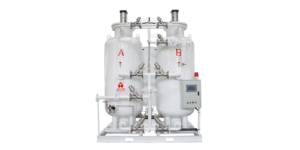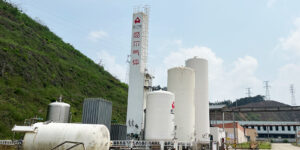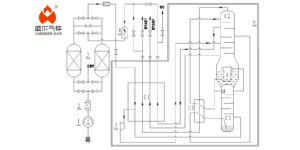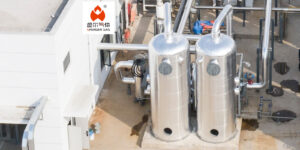With the rapid development of industry, nitrogen gas has gained widespread application in fields such as chemical engineering, electronics, metallurgy, food processing, and machinery. The demand for nitrogen gas is increasing at a rate exceeding 8% annually. Nitrogen is chemically inert under normal conditions, exhibiting significant inertness and not reacting easily with other substances. Therefore, it is extensively used in the metallurgical, electronic, and chemical industries as a protective and sealing gas. Generally, the purity requirement for protective gas is 99.99%, with some applications demanding a high-purity nitrogen of more than 99.999%. Liquid nitrogen is a convenient cooling source and is increasingly used in the food industry, medical field, and for semen storage in animal husbandry.
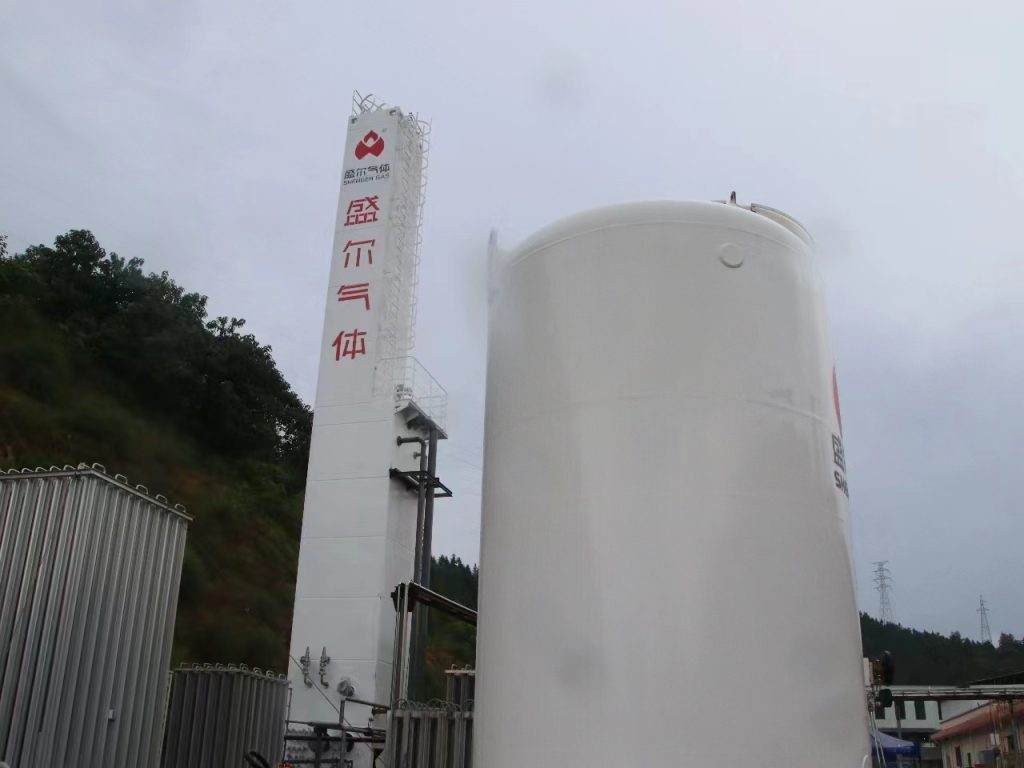
Cryogenic air separation nitrogen production
This method involves first compressing and cooling air, then liquefying it. Utilizing the different boiling points of oxygen and nitrogen components (under atmospheric pressure, oxygen boils at 90K and nitrogen at 77K), gas and liquid contact is made on the plates of a distillation column, allowing for mass and heat exchange. The higher boiling point oxygen continuously condenses into liquid from the vapor, while the lower boiling point nitrogen turns into vapor, increasing the nitrogen content in the rising vapor and the oxygen content in the descending liquid, thereby separating oxygen and nitrogen to obtain nitrogen gas or oxygen gas. This process is carried out under temperatures below 120K and hence is called low-temperature air separation.
- Air Compression and Purification Air is cleared of dust and mechanical impurities through an air filter before entering the air compressor, where it is compressed to the required pressure. It is then sent to an air cooler to reduce its temperature, followed by entry into an air dryer and purifier to remove moisture, carbon dioxide, acetylene, and other hydrocarbons.
-
In the air separation process, purified air cools in the main heat exchanger, then enters the distillation column where nitrogen gas is separated at the top. Liquefied air undergoes processes in a condenser-evaporator for both evaporation and partial nitrogen gas condensation. The resulting liquid nitrogen serves both as a reflux in the column and as a product. Waste gas, reheated in the heat exchanger, is used in an expansion machine to cool the unit and regenerate the molecular sieve, then released into the atmosphere.
- Liquid Nitrogen Vaporization Liquid nitrogen from the air separation unit is stored in a liquid nitrogen tank. When the air separation equipment undergoes maintenance, the stored liquid nitrogen is heated in a vaporizer and then delivered into the product nitrogen gas pipeline. Cryogenic fluorination can produce nitrogen gas with a purity of ≥99.999%.
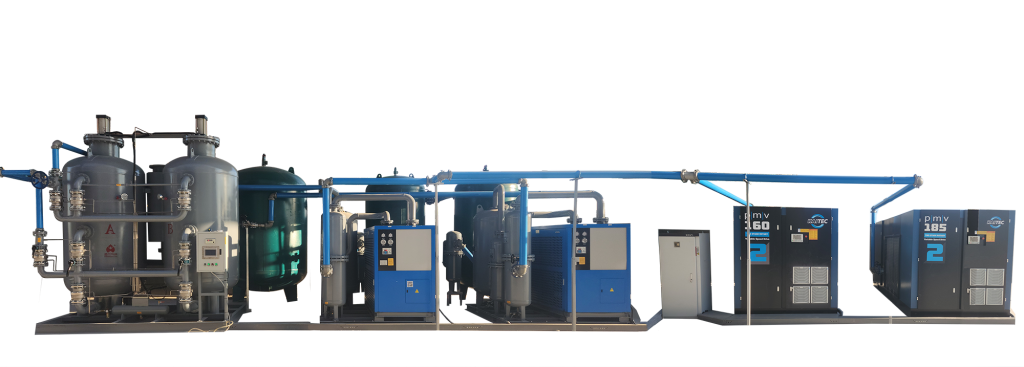
PSA nitrogen production
Pressure Swing Adsorption (PSA) is a method that separates air to produce nitrogen gas based on the selective adsorption of oxygen and nitrogen components in the air by adsorbents. When air passes through the adsorption layer in an adsorption tower after being compressed, oxygen molecules are preferentially adsorbed, leaving nitrogen molecules in the gas phase, thus obtaining nitrogen gas. Once adsorption reaches equilibrium, the oxygen molecules adsorbed on the surface of the molecular sieve are expelled by depressurization, restoring the adsorptive capacity of the molecular sieve, a process known as desorption. To continuously supply nitrogen gas, the system usually consists of two or more adsorption towers; while one tower is adsorbing, another is undergoing desorption, switching at appropriate intervals.
The general process of PSA nitrogen production is as follows:
- Air first passes through an air filter to remove dust and mechanical impurities, then enters an air compressor where it is compressed to the required pressure. It undergoes stringent oil, water, and dust removal purification to produce clean compressed air, aimed at ensuring the lifespan of the molecular sieves in the adsorption towers.
- In Pressure Swing Adsorption (PSA) for nitrogen production, two towers with carbon molecular sieves operate alternately: one adsorbs oxygen, carbon dioxide, and water from clean air, producing nitrogen-rich gas, while the other undergoes desorption, releasing these adsorbed gases into the atmosphere. This alternating process enables continuous nitrogen gas production.
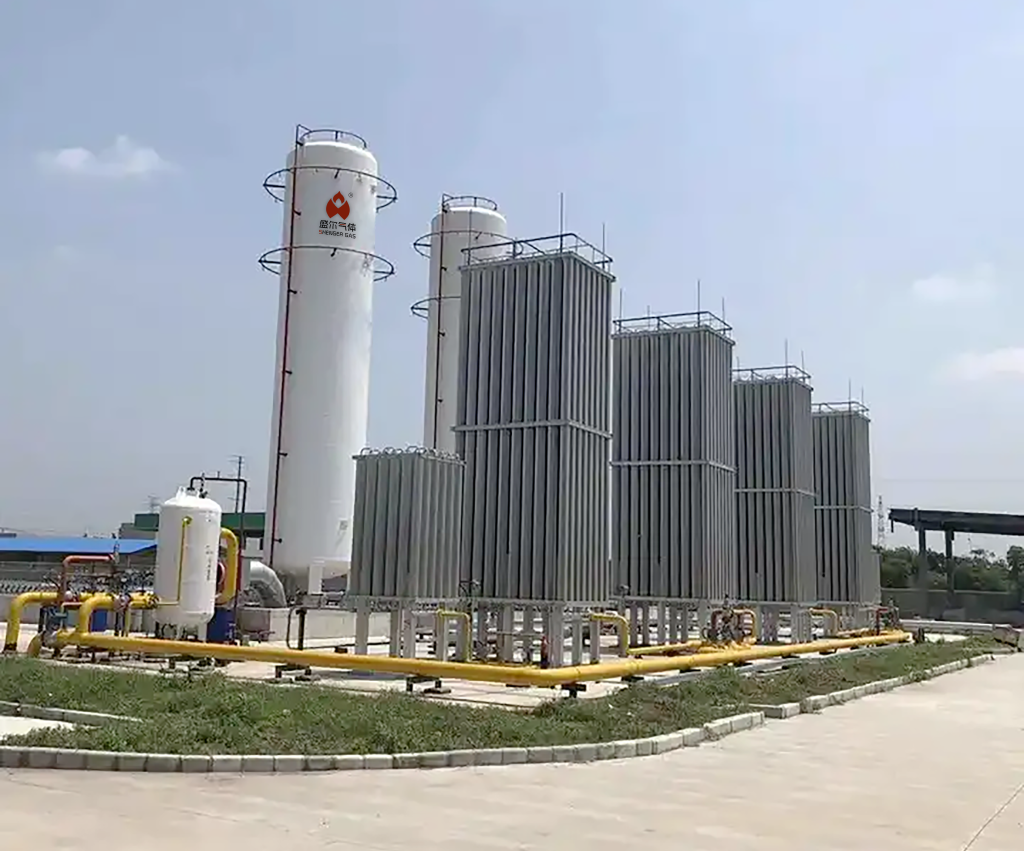
Compared
Cryogenic nitrogen production not only generates nitrogen gas but also produces liquid nitrogen, fulfilling the requirements of processes that need liquid nitrogen. Liquid nitrogen can be stored in storage tanks, and when there’s an intermittent nitrogen load or maintenance needed on the air separation equipment, the liquid nitrogen from the tanks is vaporized by heating and then fed into the nitrogen gas pipeline to meet the process requirements. The operational cycle of cryogenic nitrogen production (the interval between two major warm-ups) is typically over a year, making it generally unnecessary to consider backup systems for this method.
In contrast, Pressure Swing Adsorption (PSA) for nitrogen production only generates nitrogen gas and lacks backup methods, meaning a single set of equipment cannot ensure continuous operation over long periods. Cryogenic methods can produce nitrogen gas with a purity of 99.999%. The purity of the nitrogen gas is limited by factors such as the number of trays in the nitrogen load column, tray efficiency, and the purity of oxygen in the liquid air, with very little room for adjustment. Therefore, for a cryogenic nitrogen production unit, the product purity is basically fixed and not easily adjustable. PSA, on the other hand, typically produces nitrogen gas with a purity ranging from 95% to 99.999%.
Due to the extremely low temperatures involved in cryogenic methods, the equipment must undergo a pre-cooling startup process before commencing normal operations. The startup time, from the start of the expansion machine to when the nitrogen purity meets the requirements, is generally no less than 12 hours. Before entering major maintenance, the equipment needs a period of warming and defrosting, typically about 24 hours. Therefore, cryogenic nitrogen production equipment is not suitable for frequent starting and stopping and is better suited for long, continuous operation.
With PSA, starting the system is as simple as pressing a button, and qualified nitrogen gas can be obtained within 30 minutes of startup. Shutdown is also just a button press away. Therefore, PSA nitrogen production is particularly well-suited for operations that run intermittently.



